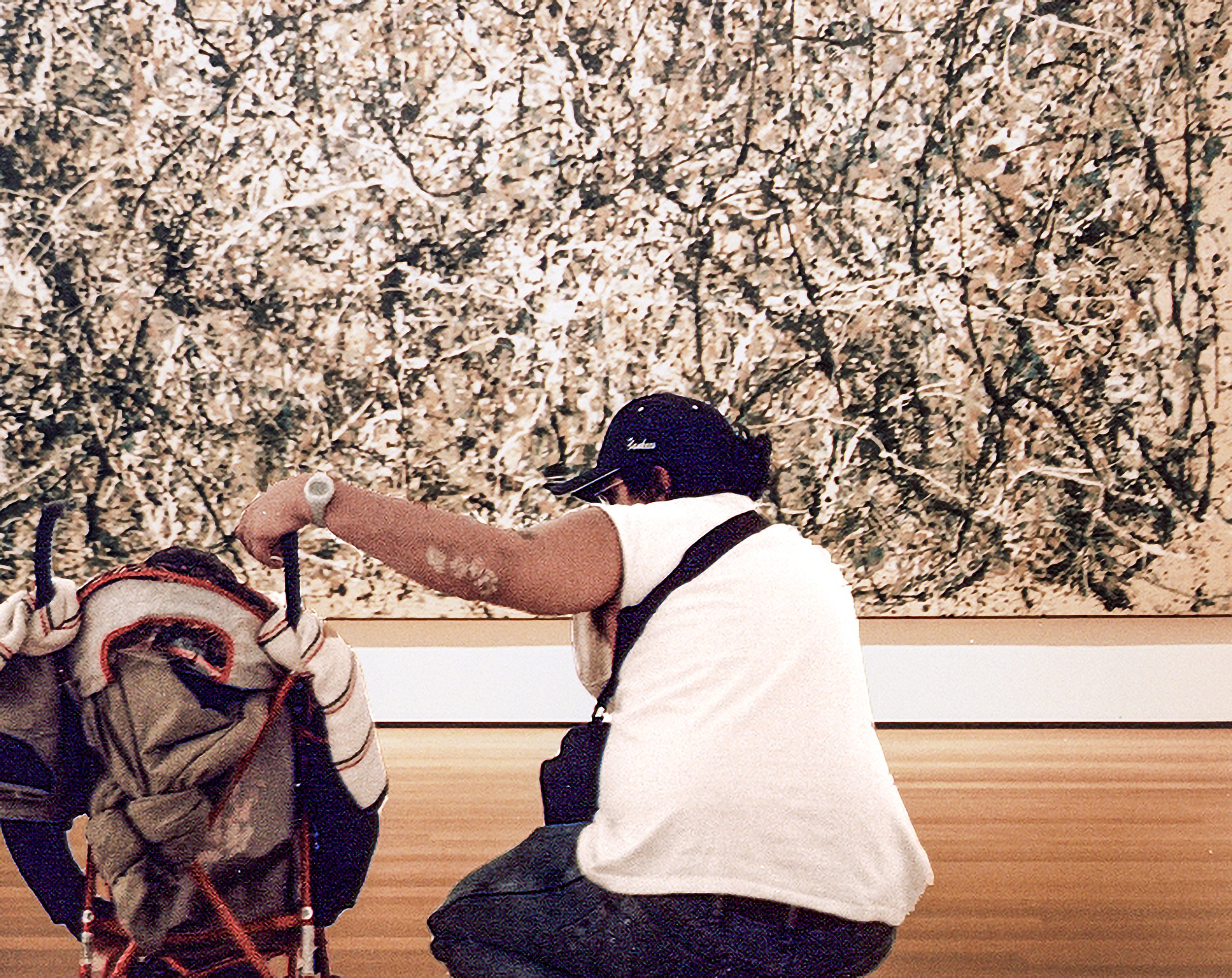Home Is Where the Art Is
Going to the museum and calling it a boring day trip might be a stretch. It’s more of quiet, recurring ritual which develops slowly across seasons and moods. If you’re lucky enough to live near a cultural treasure like the Met Museum, you go often. And again and again. Most people don’t however.
There’s a persistent misconception about who the museum is for. I can hear my fun-loving husband saying, “I’m not a big museum person.” The putative museum person, like the intrepid boring day-tripper, conjures in the popular mind part caricature, part aspirational figure: the earnest intellectual with strong opinions about lighting, who’s poring over wall text and muttering about chiaroscuro; the art student with a sketchbook and vaguely aggrieved aura; the cultural foundation matriarch festooned with chunky jewelry, jangling through the halls; the parent pulling a stroller through the Temple of Dendur while whisper-yelling about snacks; the retiree with a favorite bench who knows the guards by name. Each one is both more and less than they appear. Still, the idea of museum people and my husband’s claim that he is not among them is a diplomatic way of saying that he finds the undertaking to be boring (in the deadly-dull sense).
Framing it this way misses the point because it puts undue focus on the museum goer. You needn’t change your personality to enjoy art and history, just as you needn’t be a scholar to enjoy reading. A museum person is simply someone open to mysteries—those somethings made by another hand, in another time, that are waiting to tell a story, so long as you take the time to listen. It’s a place to train one’s act of seeing, to refocus attention like a muscle. One day it’s Louis Comfort Tiffany autumn foliage, and the next it’s fragment of an Egyptian queen's face (and her perfectly formed lips). Each time you see something different. But this needs to be done a little at a time.
The museum is too vast for a single visit. The notion that a day at the museum is just self-improvement disguised as homework stems from how most people have been taught to do it, like a task to complete: too much, too fast, with the goal of seeing everything. There’s a specific kind of fatigue when one attempts take on the entire museum. Just the iconic and famous works all together would be a marathon. Oh, at the start it begins with fresh eyes, everything is ‘splendid this’ and ‘magnificent that,’ but by the third or fourth hour, the brain becomes hypersaturated with centuries of ambition and brushwork; it blurs every landscape, every vessel, every portrait, into another tree-lined path to nowhere, another dusty broken plate, and another homely nobleman with mandibular problems.
Before I was expelled from the docent program, I gave tours at the Met Museum every other weekend. Each of the guides had been asked to design their own tour featuring ten works of art. Only ten!!! That selection process was agonizing. By that point, we had completed several months of training. Those weekends felt rare and intimate, as the curators of each department would guide us through their corners of the museum, lending us access. They spoke about bronzes and brushstrokes like cherished memories. Theirs were not so much lectures as they were personal introductions, presented with the kind of fond specificity usually reserved for childhood friends. We in turn developed strong attachments. Once you got on friendly terms with, say, a Mayan mirror-bearer or the notorious Euphronius krater, you couldn’t so rudely walk past them with little more than a glance and a nod. You have to stop to say hello.
So go—as often as you can. And if you happen to know staff or a volunteer docent, persuade then to take you on closed days so you can avoid the weird museum people. The usual crowds, pacing, phones are gone, and what's left is intimacy. Let the museum unfold in fragments, in moods, in the accidents of what draws your eye that day. You won’t see everything, and you’re not meant to. What you collect instead is a pattern of returns—a quiet familiarity that builds, until the museum feels less like a place you visit and more like coming home to a place that remembers you.





















